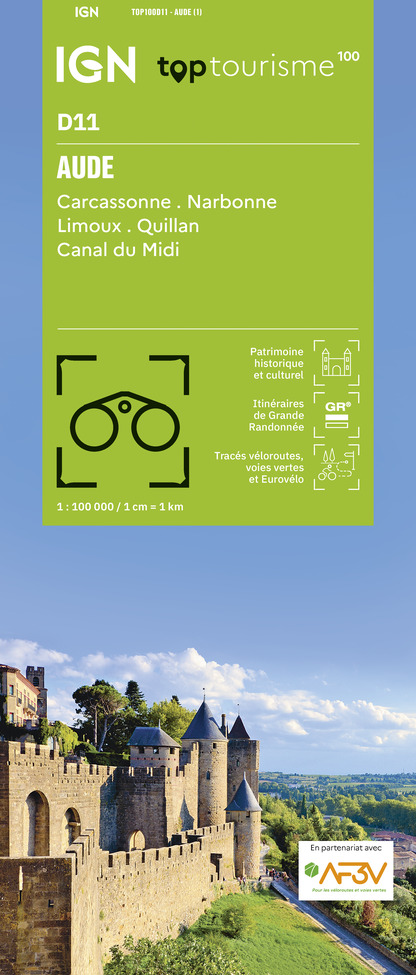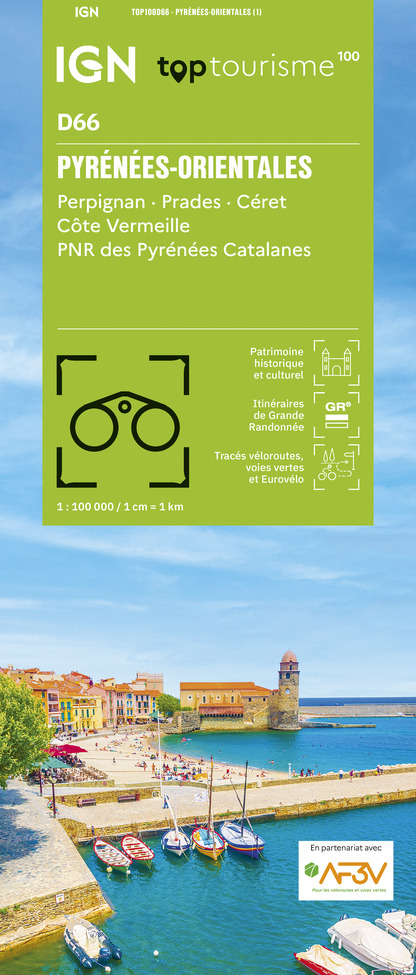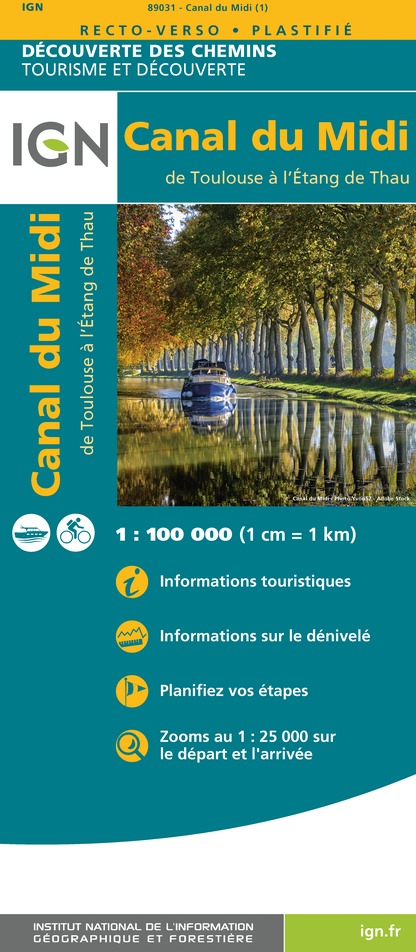Alert
Alerts
The mills










IGN cards








Description
Entre sous-bois, garrigue et vignes, arpentez cette jolie piste, avec en prime de beaux paysages.
Markings : Yellow lines and orange windmill
Start in front of the cemetery.
Go left, then first right. Steep climb (smallest front chainring and largest sprocket) on the small asphalt road.
Next to the isolated holm oak on the roadside if you stop for a while, the sight will reward you for your efforts. On the right, the vineyards with behind, the plain of Carcassonne and in the background the Montagne Noire, foothills of the Massif Central. On the other side of the road: below, the D43 which enters the massif, with above on the left, "La Lagaste", an archaeological site located on the route of the ancient Roman road, which is in the process of being rehabilitated. This 2000 year old route linked Carcassonne to Spain via Rouffiac, Limoux, Bugarach and the St-Louis pass. Further to the right, on the summit, conifer plantations, exploited plots of oak trees (firewood). In the background the Madres Massif and the Ariege Pyrenees. On the roadside, the scent that reaches you is that of thyme.
Variant*: the path goes over a ridge in the undergrowth and then crosses the garrigue.
After the scrubland, overlooking the village of Montclar. In the forest on the left, the track that separates from the forest is part of the circuit « Circaète » (sports…)
Take in the field on the right, the track that goes down where the ruts will ask you for a little more attention. Exceptional view on the vineyard. On the edge, pyramidal orchid, daisy, asphalt grass, broom. At the level of the first vines, fruit trees: cherry trees, fig trees, walnut trees, plum trees. The large trees below as well as the talus slopes are home to several varieties of birds: blackbirds, chickadees, nuthatches, red tails, red throats, jays, wrens, etc.. The brook that runs along the path benefits everyone: trees and birds.
Continue straight ahead. Steep climb (smallest front chainring and largest sprocket). Turn right at the village. Portion of road for 800m/0.5mi bordered by white mulberry trees, a variety of trees planted on the Mediterranean rim and also visible on Villeneuve and Montreal.
At the cypress trees, turn right and go up into the vineyards.
Go straight ahead between the broom massifs and descend. Just before the first vine, the abandoned field is invaded by St. John's wort (its name is given to it by the tiny holes that pierce its leaves). Further down, almond trees line the path at the top of the slope.
Turn left along the stream and follow it. On the river bank: walnut trees, lime trees, ash trees, willows, cherry trees.
Turn right. Pass in front of the lavoir decorated with flowers and cross the village. While the plane tree imposes itself in the southern villages, you will notice that the chestnut tree generously replaces it here.
Arrival.
ARBORETUM VARIANT:
Go down to the left. In the shallows, the dampness of the ground will certainly keep the boar's footprints. Turned and scraped earth is also an indicator of their passage.
At the ruin, take the path opposite.
Very strong descent! If you are not used to this exercise, it is better to put your feet on the ground and walk the 100m/330ft bike by hand.
Low point of the route: arboretum. Realised with the help of the school children, it will inform you about the names of the different existing species. The waterfall (marked out) after the small bridge over the river, will give you a little freshness. Cross the bridge again and go up the path to the last pine trees that you go around to the right. This passage in undergrowth is certainly the most beautiful place of the circuit and offers an exceptional perspective.
Turn left and go up the small steep path. You come out on the big path on which the circuit of the mill continues.
Technical Information
Altimetric profile
Starting point
Additional information
Departure
ROUFFIAC - devant le cimetière
Arrival
ROUFFIAC - devant le cimetière
Ambiance
A Rouffiac, un moulin à vent dominait le village. Il ne reste que le bas de l’édifice. Il est situé après la dernière habitation à droite de la côte. Sur un promontoire, on comprend aisément que cet endroit venté convenait parfaitement. Quand le contexte s’y prêtait, c’est l’énergie hydraulique qui était choisie. Le « ruisseau des Moulins » qui coule dans le vallon, alimentait aussi deux édifices. Au bord de la rivière, ceux-ci captaient l’eau à travers un chenal et fabriquaient la farine nécessaire à la confection du pain. Dans les villages de la Malepère, les fours à pain rappellent cette époque où le pain ne s’achetait pas à la boulangerie.
Access
D118. Cette balade peut être également abordée par Preixan(D211).
Advised parking
Devant le cimetière
Public transport
RTCA - Ligne H
Data author
